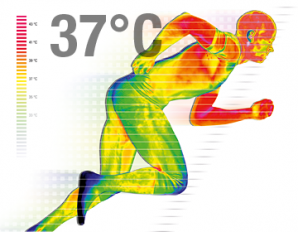My main concern is why hair from top of the head is so different compared to hair from occipital region (horse-shoe pattern) in a way how it reacts to androgens ? It has same texture, color and structure. Horse shoe pattern is final stage of male pattern baldness. Obviously first clue posters will give in this thread is hair from donor region doesn't have AR or so much of it.
Only hair follicles in top of the scalp are affected negatively by androgens. All other follicles are either stimulated (such as body hair) or not affected (such as eyebrows, eyelashes follicles and occipital hair follicles). And why is that so? Does "androgenic paradox" have to do with theories such as contact inhibition which is related with local tissue effects including inflammation and fibrosis? Of course I know main argument against theories such as galea or contact inhibition theory is fact that hair follicles form donor region transplanted to bald regions of scalp never die.
So, androgens bind with androgen receptors, then the entire androgen/AR complex translocates to the nucleus of the cell where it stimulates certain androgen-dependent genes into beginning the process of RNA transcription/translation. The proteins that are produced as a result of all that are presumably various growth factors and/or growth inhibitors which affect the hair follicle in various ways.
In follicles in top of the head DHT cause dermal papilla to produce growth inhibitors which cause miniaturization of dermal papilla (etc. squeezing). In other parts of scalp as in occipital region which is DHT resistant nothing important happens.
I remember Bryan mentioned every follicle in human body has androgen receptors. But it only matters, how follicles react to DHT. And how do they react is determined by genes inside nucleus of cells.
So, androgens affect:
I can't find study which shows that donor hair follicles exposed to extremely high levels of DHT also gradually miniaturize. Which means androgens suppress all scalp hair including hair from back of the head?
We know there are people who have diffuse horse shoe pattern or their pattern over years start gradually to recede to something called NW8.
Only hair follicles in top of the scalp are affected negatively by androgens. All other follicles are either stimulated (such as body hair) or not affected (such as eyebrows, eyelashes follicles and occipital hair follicles). And why is that so? Does "androgenic paradox" have to do with theories such as contact inhibition which is related with local tissue effects including inflammation and fibrosis? Of course I know main argument against theories such as galea or contact inhibition theory is fact that hair follicles form donor region transplanted to bald regions of scalp never die.
So, androgens bind with androgen receptors, then the entire androgen/AR complex translocates to the nucleus of the cell where it stimulates certain androgen-dependent genes into beginning the process of RNA transcription/translation. The proteins that are produced as a result of all that are presumably various growth factors and/or growth inhibitors which affect the hair follicle in various ways.
In follicles in top of the head DHT cause dermal papilla to produce growth inhibitors which cause miniaturization of dermal papilla (etc. squeezing). In other parts of scalp as in occipital region which is DHT resistant nothing important happens.
I remember Bryan mentioned every follicle in human body has androgen receptors. But it only matters, how follicles react to DHT. And how do they react is determined by genes inside nucleus of cells.
So, androgens affect:
- body hair follicles in a way to promote / stimulate their growth
- eyebrows, eyelashes follicles in a way which is neutral
- occipital hair follicles in a way which is (relatively) neutral
- hair follicles in other parts of scalp in a way which is supressive
I can't find study which shows that donor hair follicles exposed to extremely high levels of DHT also gradually miniaturize. Which means androgens suppress all scalp hair including hair from back of the head?
We know there are people who have diffuse horse shoe pattern or their pattern over years start gradually to recede to something called NW8.


